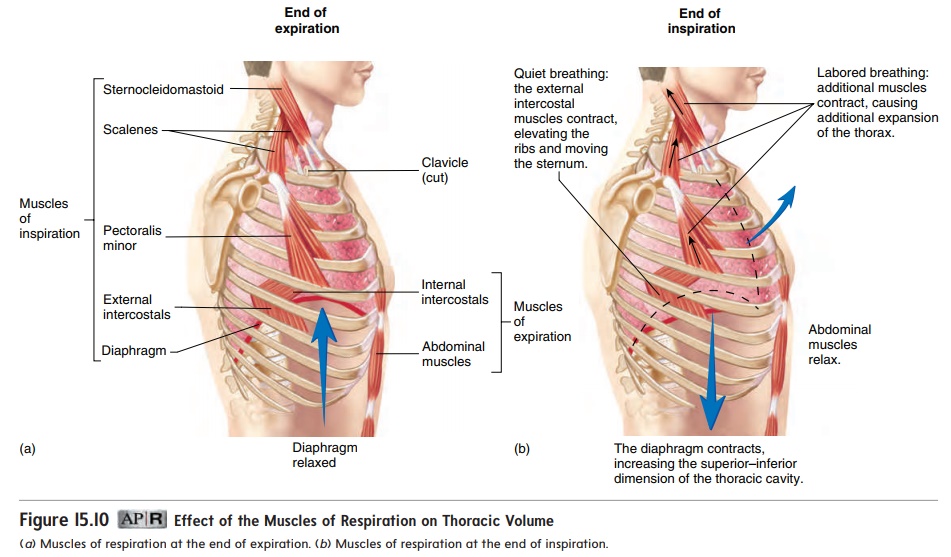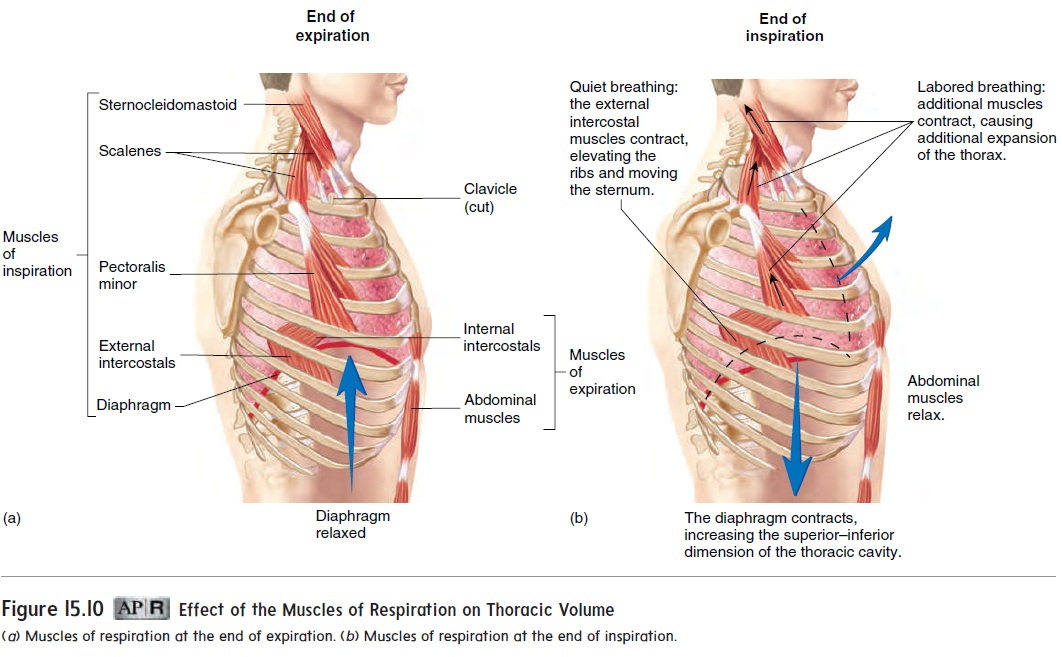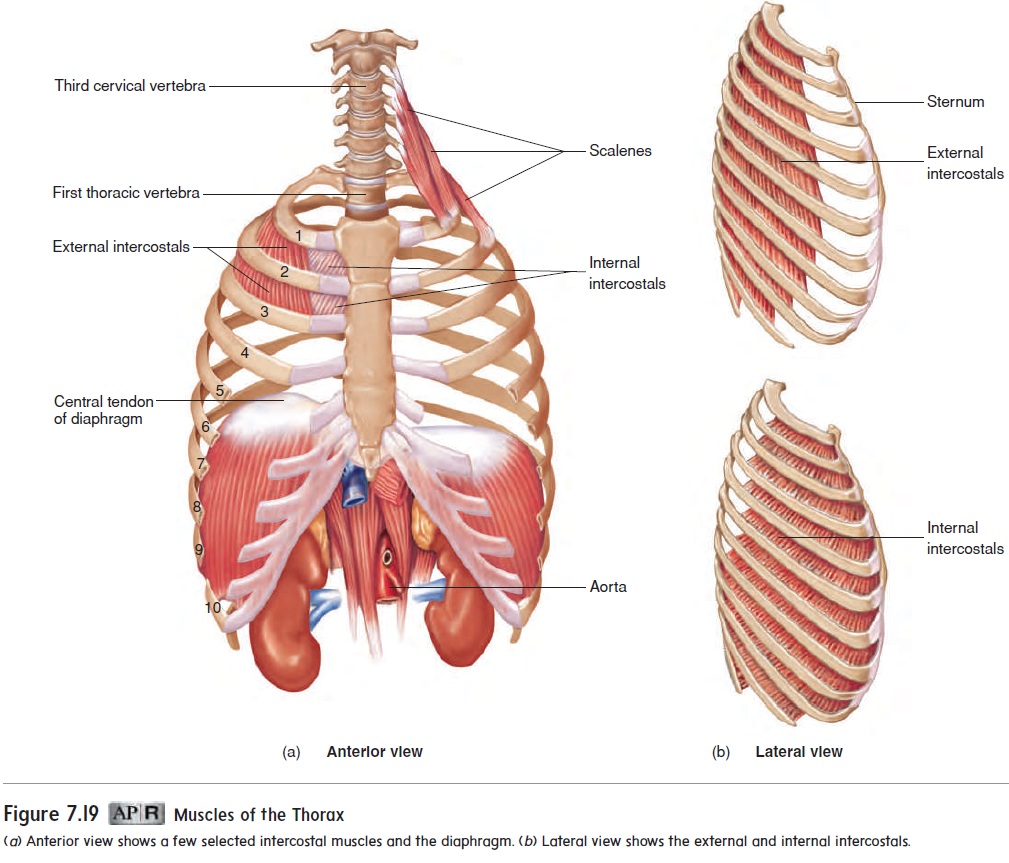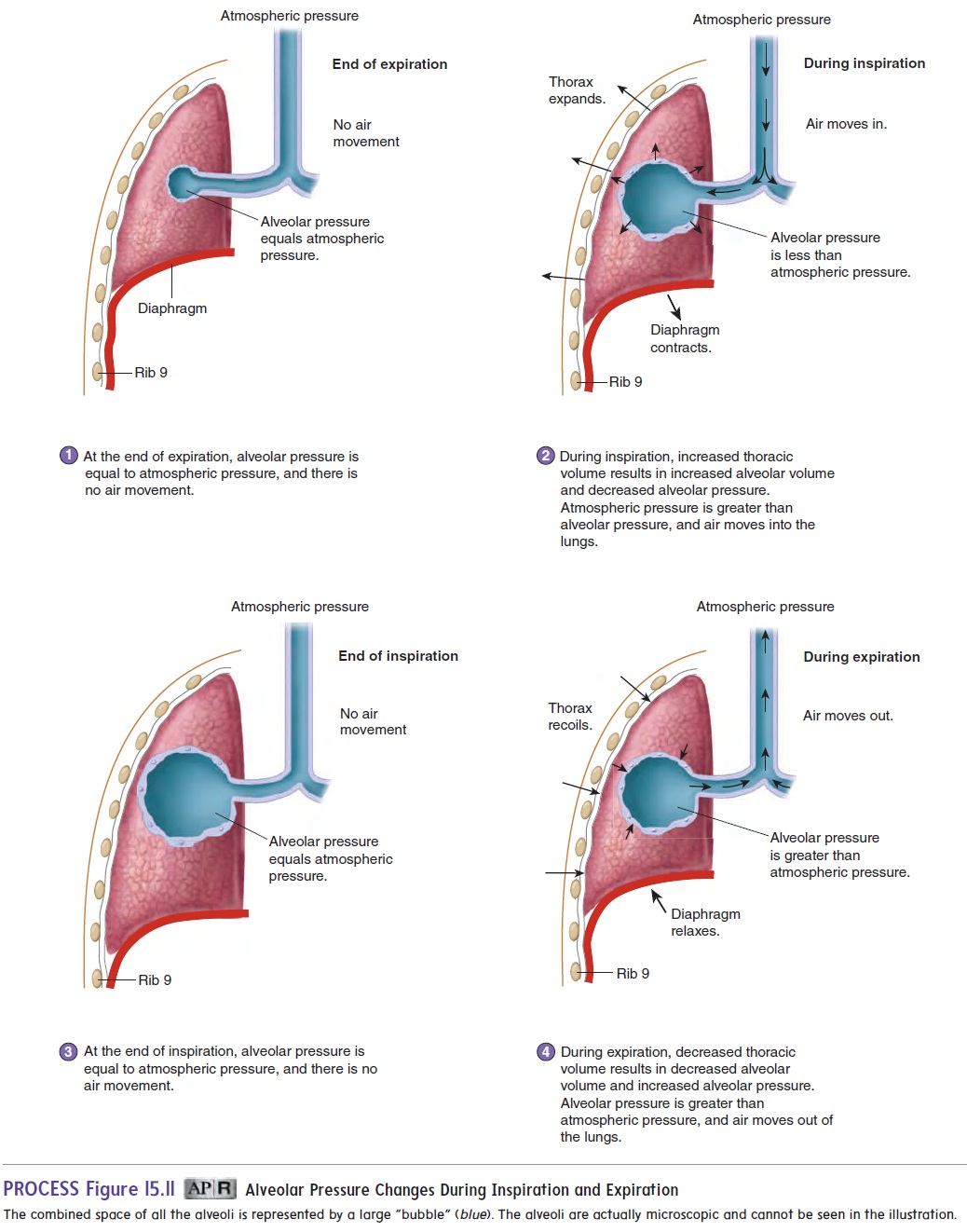Chapter: Essentials of Anatomy and Physiology: Respiratory System
Changing thoracic Volume

Changing thoracic Volume
The muscles associated with the ribs are responsible for ventila-tion (figure 15.10). The muscles of inspiration include the dia-phragm and the muscles that elevate the ribs and sternum, suchas the external intercostals. The diaphragm (dı̄′ a-fram; partition) is a large dome of skeletal muscle that separates the thoracic cavity from the abdominal cavity (see figure 7.19). The musclesof expiration, such as the internal intercostals, depress the ribsand sternum.

At the end of a normal, quiet expiration, the respiratory muscles are relaxed (figure 15.10a). During quiet inspiration, contraction of the diaphragm causes the top of the dome to move inferiorly, which increases the volume of the thoracic cavity. The largest change in thoracic volume results from movement of the diaphragm. Contraction of the external intercostals also elevates the ribs and sternum (figure 15.10b), which increases thoracic volume by increasing the diameter of the thoracic cage.
Expiration during quiet breathing occurs when the diaphragm and external intercostals relax and the elastic properties of the thorax and lungs cause a passive decrease in thoracic volume.
There are several differences between normal, quiet breathing and labored breathing. During labored breathing, all the inspira-tory muscles are active, and they contract more forcefully than during quiet breathing, causing a greater increase in thoracic volume (figure 15.10b). Also during labored breathing, forceful contraction of the internal intercostals and the abdominal muscles produces a faster and greater decrease in thoracic volume than would be produced by the passive recoil of the thorax and lungs.

Pressure Changes and Airflow
A. Two physical principles govern the flow of air into and out of the lungs:
1. Changes in volume result in changes in pressure. As thevolume of a container increases, the pressure within the container decreases. The opposite is also true. As the volume of a container decreases, the pressure within the container increases. In the same way, the muscles of respiration change the volume of the thorax and therefore the pressure within the thoracic cavity.
2. Air flows from an area of higher pressure to an area of lower pressure. If the pressure is higher at one end of a tubethan at the other, air or fluid flows from the area of higher pressure toward the area of lower pressure. The greater the pressure difference, the greater the rate of airflow. Air flows through the respiratory passages because of pressure differences between the outside of the body and the alveoli inside the body. These pressure differences are produced by changes in thoracic volume.
The volume and pressure changes responsible for one cycle of inspiration and expiration can be described as follows:
1. At the end of expiration, alveolar pressure, which is the air pressure within the alveoli, is equal to atmosphericpressure, which is the air pressure outside the body. No airmoves into or out of the lungs because alveolar pressure and atmospheric pressure are equal (figure 15.11, step 1).
2. During inspiration, contraction of the muscles of inspiration increases the volume of the thoracic cavity. The increased thoracic volume causes the lungs to expand, resulting in an increase in alveolar volume (see “Changing Alveolar Volume” later in this section). As the alveolar volume increases, alveolar pressure becomes less than atmospheric pressure, and air flows from outside the body through the respiratory passages to the alveoli (figure 15.11, step 2).
3. At the end of inspiration, the thorax and alveoli stop expanding. When the alveolar pressure and atmospheric pressure become equal, airflow stops (figure 15.11, step 3).
4. During expiration, the thoracic volume decreases, producing a corresponding decrease in alveolar volume. Consequently, alveolar pressure increases above atmospheric pressure, and air flows from the alveoli through the respiratory passages to the outside (figure 15.11, step 4).
As expiration ends, the decrease in thoracic volume stops, and the process repeats, beginning at step 1.

Related Topics